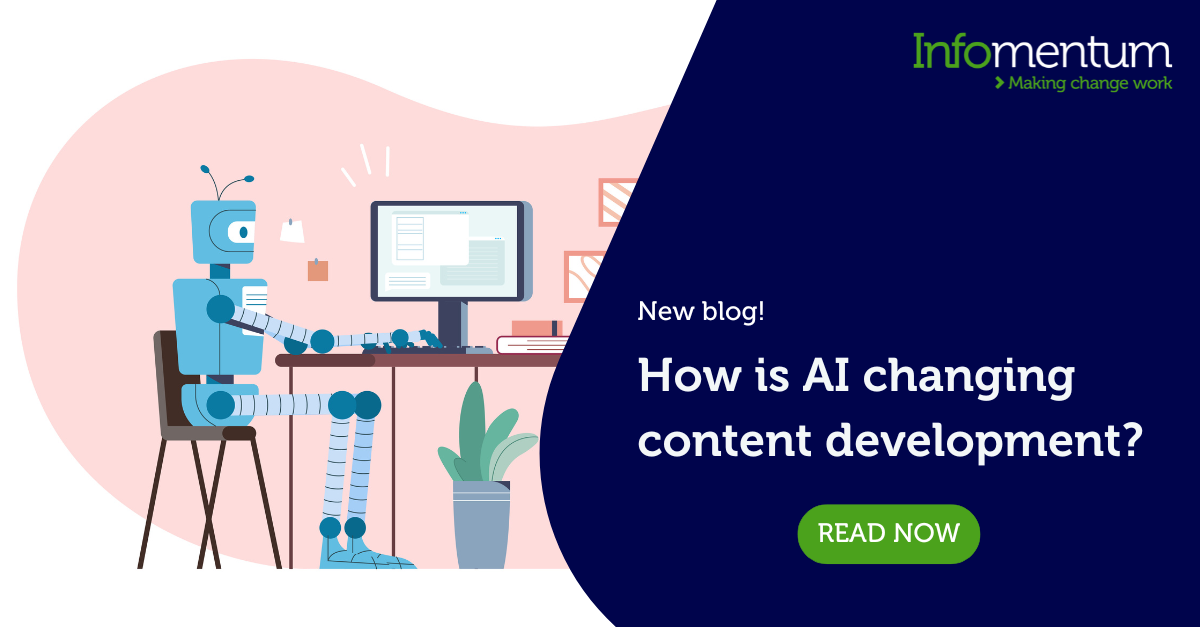All your biggest questions on digital experience platforms, answered
DXP interview series featuring experts from Infomentum and Magnolia
"Oftentimes organizations are using software which has been around for many years, and nobody is really an expert. They're using it not because they chose it, they're using it because they have to use it."
As a Magnolia Gold Partner, we were thrilled to come together with the Magnolia team to explore key topics on digital experience strategies.
In this video series, we'll answer every question you've ever had on DXPs, covering everything from migration challenges, to implementation best practices, key considerations and more.
Episode 1 - What are the main impacts of having a weak or outdated digital strategy?
With this first chapter in our interview series, we tackle the top questions around the consequences of having a poor DXP strategy. Discover the critical impact of a robust DXP while we share how innovative technology and AI can transform your business operations, boost employee morale and ensure brand consistency.
Interview Series: Erin Hickman and Jan Schulte discuss key topics on Magnolia DXP and successful digital experience strategy
Why is doing nothing actually the most expensive solution?
Sticking with outdated systems is incredibly costly for a number of reasons. Maintaining legacy systems requires a massive amount of time and money, often leading to high operational costs without delivering any real innovation or value. Even more, outdated systems expose potential security vulnerabilities, which could result in expensive breaches and emergency upgrades. A lack of modernisation hinders a company's ability to stay competitive, ultimately leading to lost revenue as customers seek more efficient solutions elsewhere.
How does a DXP affect employee morale?
A Digital Experience Platform (DXP) has a major impact on employee morale by providing the tools necessary for employees to perform their tasks efficiently and effectively. When employees are forced to work with outdated, cumbersome systems it leads to frustration and a lack of job satisfaction. Modern DXPs streamline processes, reduce manual workloads and enable employees to focus on more strategic tasks. Employees who feel empowered by their tools are more likely to stay with the organization and perform better in their roles.
How do you build automation you can rely on?
Building reliable automation involves integrating robust and modernised systems that are able to handle complex processes with minimal human intervention. Utilising platforms like Magnolia allows for the automation of repetitive tasks, ensuring that operations such as content updates, campaign rollouts and approval workflows are executed flawlessly. Reliable automation requires careful planning and the use of advanced tools that adapt to changing requirements, ensuring that tasks are completed accurately and on time.
What ways can you ensure brand consistency by leveraging AI?
Leveraging AI to ensure brand consistency involves implementing AI-driven tools that can monitor, analyse and manage your content across various channels. First, AI has the ability to automate often lengthy approval processes, ensuring that all content adheres to brand guidelines before it is published. It can also personalise content for different audience segments while still maintaining the core brand message, providing a seamless and consistent brand experience. Even more, AI is able to provide vital insights and analytics to continuously refine and align the brand strategy with the company's goals and customer expectations.
Episode 2 - What are the main reasons companies migrate to a new DXP, and how can you best facilitate this process?
In our second episode, we cover the essential insights on the complexities and opportunities of digital platform migration, including why companies make the move, how to get team buy-in and the importance of long-term partnerships.
Interview Series: Erin Hickman and Jan Schulte discuss reasons why companies migrate to a new DXP
What are the key reasons businesses push to search for a new DXP?
Businesses often search for a new DXP when their current systems become outdated or fail to meet evolving customer expectations. They seek enhanced capabilities for personalization, seamless integration, and scalability to stay competitive in a fast-paced digital environment. Additionally, the need for better user experiences and efficient content management drives organizations to explore more advanced DXPs.
How can you manage and prioritise content for a smooth transition?
To manage content effectively, businesses should first audit their existing content to identify what's valuable and what's outdated. It’s crucial to align content priorities with strategic goals, ensuring that the most impactful content is migrated first. Utilising automated tools and workflows can also streamline the process, reducing the risk of errors and ensuring consistency across platforms.
What is the significance of training and bringing your team along on the journey?
Involving your team throughout the migration journey is vital for ensuring they are fully equipped to leverage the new platform’s capabilities. A well-trained team can manage the DXP more effectively, leading to better adoption and fewer operational disruptions. Moreover, engaging your team fosters a sense of ownership and commitment, which is essential for long-term success.
How does building long-term partnerships create deeper client understanding?
Long-term partnerships allow businesses to develop a deeper understanding of their clients’ evolving needs and challenges. Over time, this understanding enables companies to offer more tailored solutions and proactive support, fostering trust and loyalty. These partnerships also create a collaborative environment where continuous innovation and mutual growth are prioritised.


